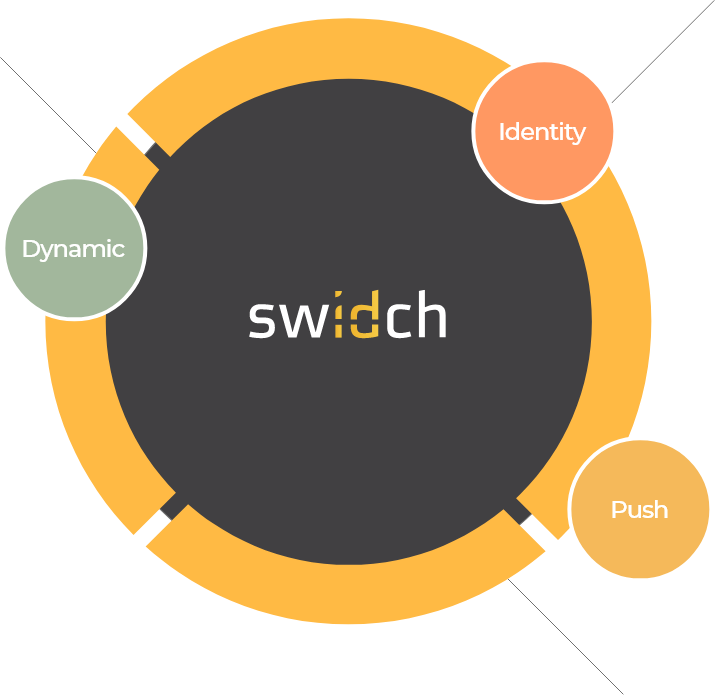

Electronic Revenue Stamp Forgery Verification and Prevention Service
For a leading Governmental Institution across Indonesia
(organisation name redacted for privacy purposes)
A leading governmental institution in Indonesia needed a new electronic revenue stamp system that easily accesses document authentication services throughout the country, made up of numerous islands, and verifies, systematically manages, and prevents the forgery of original documents. swIDch inserts the Quick Response (QR) code, generated through OTAC technology, as an image into an electronic document to quickly issue the document anytime and anywhere. The company also supports the identification of various pieces of unique information, such as the document issuance date and purchaser name, only using the code.
Challenges
Instead of paper revenue stamps used to pay stamp duties and fees, the institution suggested reliability, information transparency, and convenience as mandatory items and authentication service prerequisites for issuing convenient and highly manageable electronic revenue stamps.
In the case of postage stamp-type or paper-based revenue stamps, there are problems, such as fraudulent use and unfair transaction by users, that change the original document arbitrarily. Public organisations and private companies in many countries have introduced the electronic revenue stamp system to solve the problem of the existing postage stamp-type revenue stamp system. However, other similar issues, such as information leakage and abuse, occurred following the digital switchover. Therefore, establishing a safe and reliable electronic revenue stamp system is as necessary as digitalizing electronic documents and revenue stamp systems.
It is essential to prevent overlapping authentication numbers or the duplicate issuance of documents to ensure a fair and transparent purchase process from the issuance application to the actual purchase. An authentication system with a transparent procedure that can exclude the possibility of fraudulent issuance to insiders is considered essential for electronic government or e-government projects. This is because these procedural problems are directly related to taxes and eventually lead to government losses, such as the omission of revenue.
The transition to electronic revenue stamps must be accompanied by users’ accessibility and convenience. Pre-emptive measures should be prepared for problems, such as limited purchase sources, limited purchase times, and insufficient quantities, as in general postage stamps or paper-based revenue stamps. For this, a safe and reliable authentication system infrastructure must be established.
The solution
The new electronic revenue stamp authentication system, implemented based on swIDch’s OTAC technology, solves the information forgery problem in the existing postage stamp and paper-based revenue stamp systems based on the specificity of the OTAC algorithm known as “dynamic code.” The OTAC code changes in real time, so even if someone else hacks the generated authentication code, it is possible to prevent it from being used maliciously because it becomes invalid.
The OTAC code supports transparent issuance and user authentication and identification processes. If the QR code generated by OTAC technology is produced and inserted into an electronic document, various pieces of unique information, such as the issuance date and purchaser name, can be identified solely with the code. The OTAC-based electronic revenue stamp system can also solve the authentication and identification problems of existing electronic documents caused by the switchover to the digital environment, providing a transparent and fair electronic revenue stamp issuance and purchase environment.
Because swIDch’s OTAC technology can generate authentication codes even in poor communication environments, user verification and document issuance are possible anytime and anywhere, even in Indonesia with its remote terrain and islands. This means that electronic document security and user convenience can be improved by applying OTAC technology without significant changes to the existing infrastructure.
[AS IS] Existing Revenue Stamp System
![[eStamp] Use case 1 [eStamp] Use case 1](https://www.swidch.com/hubfs/%5BeStamp%5D%20Use%20case%201.jpg)
[TO BE] OTAC-Applied Electronic Revenue Stamp System
![[eStamp] Use case 2 [eStamp] Use case 2](https://www.swidch.com/hubfs/%5BeStamp%5D%20Use%20case%202.jpg)
Expected Effects
Today, social and economic activity areas are moving to online and virtual spaces. As a result, electronic documents are becoming essential, and authentication security technology that can secure the safety and reliability of electronic documents is also becoming increasingly important. In particular, rising electronic documents use because of remote work and nonface-to-face services following the prolonged COVID-19 pandemic has resulted in the growing interest in and necessity for electronic revenue stamps to guarantee various transactions and authenticate documents.
The electronic revenue stamp system, which combines security, information transparency, and convenience, supports government and public institution efforts to simplify complex procedures for issuing, verifying, and disposing of existing revenue stamps and reducing operating costs. Above all, the OTAC code, which changes with each use, can be applied to electronic document industry environments, such as electronic document creation, storage, and management. It can help the government manage revenue transparently by solving user duplication and reuse problems and preventing unauthorized duplication and illegal transactions.
The activation of an electronic revenue stamp system leads to more convenient and safe online paperwork. Users can easily authenticate themselves and experience a more secure digital environment for all transactions using electronic documents, such as the issuance of documents from public institutions, various contracts, land certificates, and financial services, including securities and auctions.
Why swIDch
that provides all of the following features, tested and substantiated
by the University of Surrey technical report

sufficient to IDENTIFY user
and AUTHENTICATION
off-the-network environment
Single-step identification and authentication with the code alone. Include our biometric option and get single-step MFA. Vastly improved UX by removing steps.
OTAC is a dynamic code, which means the code is constantly changing. Eliminates all use of static information. Forget usernames and passwords forever. Vastly reduced workload for IT helpdesks.
No network connection required for generating OTAC, enabling uninterrupted use no matter where you are. No more waiting for additional tokens/OTPs and no need for heavy public key infrastructure (PKI).
Highly configurable code parameters and lightweight SDK/applet means wide range of deployment options on many devices across multiple sectors.